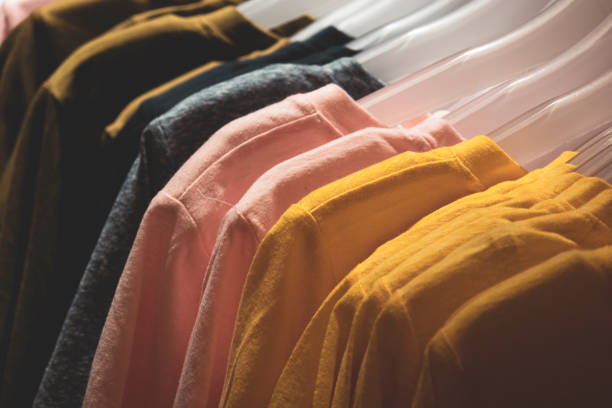Luxury Silk Underwear: A Practical Guide to Quality, Fit, and Care
Silk underwear is prized for its soft handfeel, breathable performance, and refined finish. Yet quality varies widely, and care matters. This guide explains how to assess fabric grades, understand the comfort benefits, choose a style and fit that suits your body, and maintain garments so they last longer while aligning with sourcing and sustainability values.

Luxury Silk Underwear: A Practical Guide to Quality, Fit, and Care
Silk underwear combines a smooth feel with natural performance, but not all pieces are made alike. From the type of silk fiber to the weave, momme weight, and stitching, details determine how a garment breathes, drapes, and endures repeated wear. Understanding these fundamentals helps you select pieces that feel comfortable against the skin, maintain their shape, and hold up to thoughtful laundering without losing their luster.
Understanding silk fabrics and quality grades
Silk quality begins with fiber type and construction. Mulberry silk, raised on mulberry leaves, is often used for fine intimates due to its uniform filament and soft sheen. Momme (mm) measures fabric density; for underwear, mid weights around 16–22 mm typically balance drape and durability, while lighter weights feel airier but may be more delicate. Grade indicators such as A to 6A relate to filament length and cleanliness; higher grades generally signal smoother, stronger yarns. Weave matters too: charmeuse offers a glossy face and matte back, while rib or jersey knits add stretch and a softer, matte look. Be cautious with “satin” labels—satin describes a weave and may be polyester; check fiber content for 100% silk or clearly stated blends.
Benefits of luxury silk underwear: comfort, breathability, and durability
Silk naturally regulates temperature by allowing airflow and moderating moisture, which can reduce clamminess compared with dense synthetics. Its smooth filaments glide over skin, minimizing friction points that can occur with textured fabrics. For everyday durability, look for well-finished seams, reinforced stress points, and a practical gusset lining where applicable. Some designs incorporate a small percentage of elastane to improve fit retention without overwhelming silk’s feel. With appropriate care, mid-weight silk can maintain its structure and surface for many wears, resisting pilling and static while delivering a weightless sensation under clothing.
Selecting the right style, size, and fit
Style impacts comfort as much as fabric. Briefs, bikinis, and hipsters offer varying coverage, while thongs minimize visible lines. Trunks or boxer briefs in silk blends can provide support with a cooler touch for those who prefer longer legs. Consider rise (low, mid, high) to match your torso length and where waistbands naturally sit without digging. Pure silk wovens have minimal stretch, so accurate measurements—waist, hip, and where leg openings sit—help prevent strain on seams. Knits or silk with light elastane allow a closer fit. Look for flat, soft elastics, smooth bindings, and gussets made from breathable materials. If between sizes, choose the larger for woven silk; for knitted silk, consult brand measurements and note garment ease.
Care and maintenance: washing, drying, and storage best practices
Proper care prolongs silk’s life and feel. Hand washing in cold water with a pH-neutral detergent designed for delicates protects fibers; if machine washing, use a mesh bag on a gentle cycle with similar colors. Avoid bleach, enzymes, optical brighteners, and fabric softeners, which can weaken silk or cloud its sheen. After washing, do not wring; instead, roll in a clean towel to remove excess water, then lay flat or hang to dry away from direct sun or heat. If needed, steam lightly or iron on the lowest silk setting on the reverse side. Store clean, fully dry garments folded in a breathable drawer or fabric bag, using cedar or lavender to deter moths. Spot-treat stains promptly with silk-safe solutions and test on an inconspicuous area first.
Sourcing, sustainability, and ethical considerations
Sustainability spans fiber cultivation, processing chemistry, labor conditions, and product longevity. Mulberry cultivation requires inputs and water; choosing items from makers who disclose supply chain steps can support more responsible practices. Certifications such as OEKO-TEX Standard 100 indicate testing for harmful substances in finished textiles, while GOTS can apply to organic silk when certified along the chain. Some labels discuss alternative sericulture methods, including so-called peace or Ahimsa silk; review brand statements to understand what these terms mean in practice. Ethical manufacturing standards and transparent auditing—covering wages, working hours, and safety—add assurance. Durability and repairability are also sustainability factors: well-constructed pieces that can be mended and worn for years often lower overall impact compared with frequent replacements. Finally, choose minimal packaging where possible and wash with care to extend life.
Conclusion Understanding silk type, fabric weight, construction, and finishing provides a reliable foundation for evaluating luxury underwear. When paired with a style that suits your body, accurate sizing, and careful laundering, silk can deliver year-round comfort and a refined feel. Thoughtful sourcing and long-term maintenance complete the picture, turning a delicate fabric into a practical, enduring part of a wardrobe.




